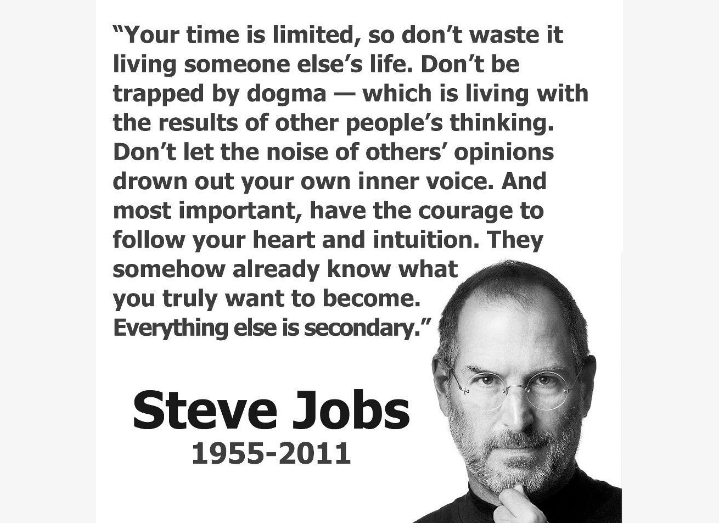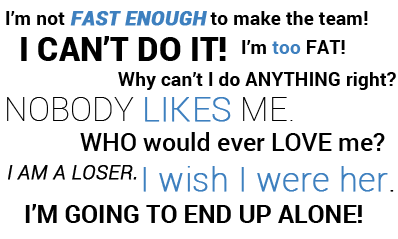student council
How to Set Goals: Your Goals Begin With You!
Over the last few weeks, I’ve been posting about How To Set Goals. I believe that goal-setting is one of the most important skills a leader can learn. So far we’ve outlined the 4 CRUCIAL QUALITIES OF AN EFFECTIVE GOAL. They are:
1. YOUR GOAL MUST BE POSITIVE
2. YOUR GOAL MUST BE SPECIFIC
3. YOUR GOAL MUST BE REACHABLE
4. YOUR GOAL MUST BE PERSONAL
However, before you begin our goal setting adventure, I want you to familiarize yourself with what I call, “The Law of Motivation”— A concept I came up with over 15 years ago when I developed my first programs on goal-setting for leaders. Who knew it would stick? I adapted it from that well-known 17th century scientist, Sir Issac Newton. Remember him? He’s the guy who discovered gravity when an apple fell on his head. Well, he also developed the groundbreaking First Law of Motion. It states that:
“An object at rest will remain at rest until acted upon by an outside force.”
This means that unless you live on a hill, a bowling ball sitting on your front lawn is not going to roll away by itself. Similarly, goals cannot be accomplished unless we put them into action.
Thus, we transform the Law of Motion into the Law of Motivation.
For our scenario, we will apply this scientific Law to Motivation and your life as a leader; the object will be defined as your goal—that tangible you want to have come true. It could be anything, depending on your stage of life or circumstances: the type of person you want to be, the grades you want to achieve, the friends you want to make, the job you want to land, the college you want to attend, the success of your next big project, the money you want to earn… because when you invent your future:
Defining your goal is as simple as that! Don’t know what your goal is yet? Examine your strengths and weaknesses. Consider your likes and dislikes. Reflect on your values. You’ll find it! This process requires time and deep thinking, so don’t gloss over it. When it comes to your goals, you must know and feel confident about what YOU want. So what does your goal have to do with motivation? Let’s take a hard look at what it means. The root of the word motivation is motive. Here’s how the dictionary defines motive:
“Motive: something causing or able to cause motion.”
Before you can motivate yourself, you must have a motive—something to get you going. If you have no object, or goal, you have nothing to put into motion.
So, to start, this Law of Motivation tells us:
“Your goals and dreams will remain at rest unless acted upon by an outside force.”
The second part of this law talks about an outside force. That’s where your motivation comes into play. You are that force.
Just as nobody can decide your goals for you, neither can somebody achieve them for you, nor can your goals fulfill themselves.
Although you may be surrounded by people who love you and want you to succeed in your life, they don’t care about your goals as much as you do. They can’t. They aren’t you. Most people are busy enough as it is trying to get their own goals into motion to give yours the attention that it needs—and that it deserves. Nobody can get your object into motion except you. That’s why the Law of Motivation ultimately says:
“Your goal is not going anywhere until you take responsibility and move it yourself!”
Sounds simple, doesn’t it? Well, it is! The basics of goal-setting have been around for generations. It’s one of the tenets of leadership. However, studies show that still less than three percent of people use goal-setting skills where, and when, it really counts.
So many people walk through their world, subconsciously thinking, “I hope I end up somewhere good.” But they do not intentionally make a plan to get to that “good” place. Many years later they look back and wonder why their hopes and dreams are not actualized. This should come as no surprise.
How can you end up somewhere good if you have no idea where (or what) good is?

That’s what goal setting is all about – not letting life and chance decide where you end up; instead purposefully transform hopes and dreams into achievable goals.
Remember the three percent of individuals who do set goals? Among them you’ll find the top achievers and leaders of this world. It wasn’t magic or happenstance. They harnessed their internal motivation and focused their efforts for proper goal setting.
This is the Law of Motivation in action. Like other scientific laws, this process does not only work in a few random instances. It can be replicated by anyone who desires their dreams to come true and sets out to achieve their goals.
Next: Your Inner Critic: 4 Words That Sabotage Goals
Do you have and tips or tricks on how to reinforce your goals and stay motivated to stay on the path to achieving your goal? Please share your ideas with us in the comments section below!
Goal Setting Basics: 4 Words That Sabotage Goals
The Inner Critic is a concept that psychologists use to refer to that inner voice that attacks a person, saying that he or she is bad, wrong, stupid, worthless, and so on. And it loves to show up right when you’re trying to accomplish your most important goals. It tells you that you are going to fail. And oftentimes it succeeds – simply because you choose to believe those negative thoughts.
The voice of this Inner Critic is nothing more than a thought. And the average person has about 50 thoughts per minute! These ideas or opinions are produced by thinking or just suddenly occurring in our mind. They can be about anything… from a memory of our last vacation, a joke we heard on TV, a doubt about our life, or even a fierce dragon! Your Inner Critic LOVES to hold on to certain negative thoughts, and accepts them as true – even when there’s not one shred of proof to back it up – that’s when these thoughts transform into beliefs.
Remember: Just since we believe something, it doesn’t make it true. Heck, people used to believe the Earth was the center of the universe until scholars took a good look and proved them wrong.
When setting goals, a good place to silence the Inner Critic is with our words.
Ever tell a lie? Of course you have. Ever tell a lie so many times that one day you caught yourself thinking that the lie was the truth. That’s because the words we speak reinforce your beliefs.
When we say our negative thoughts out loud, we reinforce those beliefs which keep us from taking action and eventually lead us to failure.
However, when we transform those thoughts into positive statements, we force our Inner Critic to listen and change the things it tells us.
Here are 4 Negative Words we can avoid when speaking about our goals and the 4 Positive Words we should use to replace them:
#1 – “TRY”
TRY is one of the most useless words ever. It’s the word we use when we intend to fail.
What did our old pal YODA say about the word try? That’s right!
“DO or DO NOT – There is no try.”
#2 – “CAN’T”
CAN’T is such a final word. It instantly tells your Inner Critic that all possibility of success is gone.
Which is just so sad! Especially, since most of the time when someone says CAN’T – they usually mean WON’T.
If you wan’t to set forth on a positive track, substitute the word CAN’T with CAN!
#3 – “WHY”
Your Inner Critic is always looking for an excuse to butt-in and give an opinion.
It likes nothing better than to tell you you’re not good enough and seeks to talk you out of your goals.
When you say the word: “WHY” – you’re giving your Inner Critic a direct invitation to jump in and fill in the blanks for you.
When we feel desperate or helpless it often comes out as “WHY ME?”
When doubt enters your mind, replace WHY with HOW.
When you ask: “WHY CAN’T I FIND A JOB?” – Your Inner Critic comes up with all sorts of negative answers that psyche you out!
Instead ask: “HOW AM I GOING TO DO THINGS DIFFERENT TO FIND THE CAREER THAT’S WAITING FOR ME?”
And instead of asking: “WHY AM I DOING SO BAD IN SCHOOL?”
Assign your creativity to work on: “HOW AM I GOING TO ARRANGE MY SCHEDULE TO ALLOW ME TO STUDY MORE?”
See how it forces your Inner Critic to use its efforts more efficiently? You challenge it to come up with a solution to your goal rather than knock it down.
#4 – “DON’T”
Human beings tend to gravitate toward the direction in which we are focused. When we get wrapped up in thinking and talking about the things we don’t want to have happen in our lives, we take away our focus from the things we do want.
It’s the first quality any goal needs to succeed. I talk about it in a past post: How To Set Goals | Quality #1: Make Your Goals Positive!
Focus your goals on the positive with words like: I WILL or I WANT or I AM!
ONE LAST THOUGHT ON NEGATIVE SELF-TALK & CONQUERING THE INNER CRITIC:
There are so many ways that our Inner Critic can make us struggle with the person we were born to be. Check out this video created by ALWAYS.
They have launched a campaign to help young women eliminate negative words from their lives.
When I watched it, it made me re-think everything that comes out of my mouth. Let me know what you think.
Has your Inner Critic ever kept you from getting what you want? Do you have any tips on how to keep positive when self doubt starts to interfere with your goals. We want to know! Please share your ideas with us in the comments section below.
How To Set Goals | Goal Setting Fundamentals
“A leader is one who knows the way, goes the way, and shows the way.”
— John C. Maxwell
⇒ Leaders Set Goals
Do you consider yourself a leader?
Sometimes we associate leaders with high-profile, powerful positions.
• The CEO of a Company.
• The Principal of a School.
• The President of the United States
And yes, these people are leaders. But you don’t have to be rich, famous, or powerful to be a leader. You just need to be a person who leads.
Leaders are needed in all areas of life — in families, amongst friends, on teams, in the workplace, and on campus.
They’re the ones that open doors for others to follow and set the standards by which we live.
Leaders can possess a variety of different characteristics and personality traits. They might be driven, intelligent, creative, hard-working, charismatic, or even domineering. But the similarity that one can find amongst almost every leader… THEY HAVE GOALS!
“You can practice shooting eight hours a day, but if your technique is wrong, then all you become is very good at shooting the wrong way. Get the fundamentals down and the level of everything you do will rise.”
—Michael Jordan
⇒ Fundamentals of Effective Goal Setting
In goal setting, technique is everything!
When I hear people explain that they are having trouble with accomplishing their goals, it is usually because they started off wrong from the beginning. They had bad goals. I don’t mean the things they wanted were bad. It’s just that they didn’t set their goals up for success.
A goal is more likely to be accomplished if it’s designed with these qualities in mind:
1. YOUR GOAL MUST BE POSITIVE
2. YOUR GOAL MUST BE SPECIFIC
3. YOUR GOAL MUST BE REACHABLE
4. YOUR GOAL MUST BE PERSONAL
If your goal doesn’t satisfy these four requirements, you might run into some trouble along the way. Over the next few posts, we’ll take a closer look at these characteristics that differentiate a good goal from a bad goal.
NEXT UP: How To Set Goals Quality #1: Make Your Goal Positive
Do you have any favorite goal-setting lessons, quotes, games, or activities that you use to teach goal-setting? Maybe you know a great tip to help eager goal-setters reach their goals faster? Leave your comments below!
I look forward to a great goal-setting discussion!
Public Speaking 101
Your purpose is to make your audience see what you saw, hear what you heard, feel what you felt. Relevant detail, couched in concrete, colorful language, is the best way to recreate the incident as it happened and to picture it for the audience – Dale Carnegie
If facing a large audience gives you shivers, and the thought of public speaking gives you pangs of nervousness, make sure to follow these basic guidelines before you prepare for your next public speech or presentation.
Make the introduction gripping, and the content clear and concise
The content of your speech is the backbone of your success. Remember that first impressions are the last ones too, and aim to capture the attention of your listeners with your first expression. Starting with an inspirational quote, or a relevant short story, may work well to grip an audience. Ryan McLean highlights the importance of a captivating beginning by saying, “Your introduction needs to establish with the audience why it is important to them and why they should be listening to the speech.”
That being said, the quality of the main body is equally essential to ensure a successful outcome. The success of your presentation will be judged not by the knowledge you send out, but by what the listeners grasp from your words. Be understandable and assertive on your viewpoints; make sure you speak slowly, clearly, and thoughtfully. Keep the content to the point, avoid beating about the bush, and keep in mind the difference between a lecture and a speech. When determining the length of your content, take a hint from Dorothy Sarnoff’s advice, “Make sure you have finished speaking before your audience has finished listening.”
Confidence, composure, and poise
Undoubtedly, the most feared words of public speaking. You may be trying your best to avoid eye contact or imagining there is no one in the room, but as dreaded as it is, eye contact and speaking with confidence is extremely vital for an exceptional public act. It is absolutely vital for a public speaker to know the difference between ‘public reading’ and ‘public speaking’. Your audience is not there to watch your head hanging down as you read from a piece of paper. Make sure to be well-dressed, keep your hands out of your pocket, and stand tall and erect without moving a lot.
Public speaking is only 10% what you deliver and 90% how you deliver. Make sure you have researched well on your facts and figures, and confidently convey it to your listeners to make them believe in your potential and credibility. Keep it engaging and smooth by focusing your gaze on the audience as you speak and redirecting it to different listeners through the act.
Stay calm under unexpected problems
Broken multimedia, faulty projectors and whistling speakers are a common sight at conferences and corporate meetings. It is completely normal to experience technology hitches, unforeseen accidents, unnecessary interruptions, or simply going blank during your speech, or presentation. Stay calm under pressure, crack a joke, avoid being over apologetic, and most importantly never bury your face in your hands! Express your need for a pause to recollect your thoughts and resume once you are ready. Your tactful demeanor and quick recovery from a setback may leave your audience even more impressed.
Leadership Game | Back To Back Drawing Student Leadership Game
Leadership Game | Back To Back Drawing Student Leadership Game
© Russ Peak | Leadership Has Never Been This Fun! | Leadership-Ideas.com
[divider height=”30″ line=”1″]
Description
In this student leadership game, your students will learn the importance of clear communication as they pair up back-to-back and attempt to re-create a drawing with only limited verbal instructions.
Purpose
This activity teaches effective communications skills. It emphasizes the importance of giving clear instructions when presenting your ideas. Whether giving instructions to a teammate, presenting your student council election speech, or advertising the next school dance… the presence of clear and specific directions will ensure the success of your student leadership efforts.
Group Size
Any
Materials Required
A Pad of paper and pencil for each pair of players
Shape drawings (Download & Print this PDF with Shapes)
Optional – Use a dry erase board for writing participant’s key point answers and “a-ha!” moments during discussion.
Time Required
15-30 minutes
[divider height=”30″ line=”1″]
INSTRUCTIONS
Get Ready & Explanation
- Divide your group into pairs.
- Instruct each pair to sit on the floor back to back.
- Give one person in each pair a pencil and pad of paper.
- Explain that the player holding the picture will give verbal instructions to their partner on how to draw the shape – without actually telling the partner what the shape is.
- Show your group the drawing of the square and explain:
“You may not simply say, ‘Draw a square!’ Or even ‘Draw the shape of SpongeBob’s body.’”
“Instead, you will give step-by-step directions.”
“For example: If this were describing the SQUARE, I’d say…”
“Draw a line horizontally across the page.”
“At the end of the line you just drew, draw a line going down the page… Etc.”
Note: Don’t complete the whole drawing or get too specific in your drawing example. Let them figure that out themselves. Discard the square.
Play The Game
- Pass out a shape to the paired player who does not have the pencil and pad of paper. Make sure to only let the direction giving player see the shape.
- “Go! Artists… no looking!”
- When the drawing is complete. Ask each pair to compare their original shape with the actual drawing.
- Play this game 3 or 4 times allowing the pairs to see the outcome of their drawings. Pass out a different shape each game and allow pairs to switch who is the communicator and who is the drawer.
[divider height=”30″ line=”1″]
DISCUSSION IDEAS
 During the first round, how well did the direction giver describe the shape? How well did the second person interpret the instructions?
During the first round, how well did the direction giver describe the shape? How well did the second person interpret the instructions?- Were there problems with both the sending and receiving parts of the communication process?
- What did you do to improve the communication process? What was the result?
- Have you experienced a situation where bad communication was an issue? What happened? How could have more direct communication have helped?
- What can we learn from this in our attempts to reach out to our campus and community as leaders?
- Is there anything we are currently doing as student leadership that could be improved with better communication efforts?
[divider height=”30″ line=”1″]
COMMENTS
- Use basic shapes for the first couple of rounds. Switch in the more difficult shapes as your student leaders catch on.
- Remember, like many team-building and student leadership games, this in not just a quick game in route to an object lesson. This game actually is great practice in developing these invaluable student leadership skills. Incorporate this and other leadership skill building games into your leadership or student council class on a weekly basis.
- Ideas stick better when accompanied by a personal example. Your student leaders will gain greater retention of your discussion points when they accompany their basic answers with an example or descriptive story, hypothetical or real, that involves how they have or will use their leadership skills in a personal away. Encourage this sort of response and ask follow up questions.
- New at leading group games? Check out this article that explains the simple secrets that will leave you leading games like a pro! Playing With A Purpose: Simple Secrets To Student Leadership Games That Teach And Inspire
• • • •












